Extra sensory perception - Can a Blind man see? Scientific confirmation of subliminal cognition
ONGOING SCIENTIFIC CONFIRMATION OF SUBLIMINAL PERCEPTION AND COGNITION IN RELATION TO REMOTE VIEWING SKETCHES
BY:NYIAM V
Research in subliminal perception has gained much attention in the past decade due to advancements in the fields of cognitive science, neurophysiology, and brain imaging . Technological breakthroughs now allow for the unambiguous measurement of subtle reactions within the physiology and neurology of participants in experiments being subjected to subliminal stimuli — information presented below the threshold of awareness . In short, mainstream scientists are now able to measure the fact that even when we do not consciously “see” something, there is a part of us that does — sometimes even recognizing high-level concepts, meanings, shapes , and patterns that are usually attributed to conscious awareness — all behind the scenes — behind the veil of the threshold of awareness.
It is generally accepted that humans function using what is commonly referred to as a two part system of information processing— a conscious portion, and an unconscious, these systems being interconnected in a myriad of ways . The unconscious portion , that which resides outside of conscious experience and awareness, takes primary position in the information processing chain due to being an earlier development in our physiological/psychological evolution, in a sense (no pun intended) it “sees” the information before the conscious self does. It has been recognized that information passes into/through the unconscious processing areas before (if ever) entering conscious awareness , in fact there is an approximated 11 million bits of information transferred from the human sensing systems to the brain each second, however (according to textbooks on human physiology) the conscious processing areas above the threshold of awareness seem to be only able to get a grasp on somewhere between 16 and 50 bits per second .
One of the worlds most active researchers on the cognitive neuroscience of the human brain, Stanislas Dehaene and his team at the Cognitive Neuroimaging Unit at The College de France in Saclay, France are engaged in measuring what they term ”signatures of consciousness” the “ several markers of brain activity [that] change massively whenever a person becomes aware of a picture , a word , a digit, or a sound.” using an “experimental strategy of creating a minimal contrast between conscious and unconscious perception” and the latest technology in functional magnetic resonance imaging (fMRI) and electro/magneto encephalography. The results of the experiments are shared in the recent book CONSCIOUSNESS AND THE BRAIN: DECIPHERING HOW THE BRAIN CODES OUR THOUGHTS (Penguin Books 2014 ). After years of experimentation using human subjects with normal functioning brains/sensing systems, as well as patients with severe and sometimes massive brain lesions in the primary visual cortex (rendering some completely blind, others with visual form agnosia; the inability to consciously recognize shapes) found that in both normal functioning and impaired subjects “sophisticated executive functions have been shown to operate unconsciously based on invisible stimuli (…) even an invisible stop signal can trigger a wave of activity that spreads deep into the executive networks that allow us to control our actions.”.
The demonstration of these subliminal forms of perception are often referred to as blindsight “Lacking conscious vision (…)however when an experimenter shows them objects or flashes of light, they accurately point to them. In a zombie like manner, they unconsciously guide their hand to locations that they do not see— blindsight indeed.”
Even motor functions were activated by unseen stimulus, in other experiments they determined that “our motor cortex can prepare a response to a stimulus that we do not see “ although the target was invisible it “nevertheless sent a small unconscious activation to the motor cortex, commanding the hand that would have been appropriate.” In other experiments, through subliminal signalling even the movement of the eyes and a change of a task/activity of a conscious human subject could be triggered. It was demonstrated that subjects motor systems seemed to unconsciously see things better than they could consciously, controlling gestures and orienting the hands ( vertical ,horizontal , oblique ) even adapting the size of grasp in the hand when interacting with objects invisible in the visual cortex. Subjects with a complete lack of vision were able to navigate though cluttered hallways without bumping into an obstacle.
In other experiments they found that “targets” (images/symbols/words) flashed on a screen for the duration 40 milliseconds combined with subliminal masking techniques were invisible to a conscious human subject (normal visual functioning) viewing the screen, but when the duration was increased to 60 milliseconds the image was easily perceived “The length of the threshold [of awareness] varies across subjects, but it always falls close to 50 milliseconds (…) presenting visual stimuli at threshold therefore offers a wonderfully controlled experimental paradigm: the objective stimulus is constant, yet its subjective perception varies from trial to trail.”(40) .
The results of interest are UNAWARE + CORRECT TRIALS: where subjects were able to give correct information as to the location or content of the image /word flashed on the screen below the threshold of awareness . In most cases they were unaware as to how or why they had obtained the correct information, they had not consciously perceived the target- but somehow consciously accessed correct information about it – similar to the patients with lesions who demonstrate the “blindsight” mentioned earlier, these subjects were able to demonstrate “conscious access” to information regarding the unconscious and invisible stimuli. This moment of “conscious access” was measured with sensitive electro/magneto encephalography equipment as the “P300 wave” a sudden fluctuation of activity in the higher cortical regions of the brain responsible for conscious activity and processing which is only observed in the trials in which there were UNAWARE + CORRECT results. Stanislas and his team claim the P300 wave is an objective recording of sudden access to a conscious percept.
IN RELATION TO THE RENDERING OF SKETCHES IN REMOTE VIEWING.
(REMOTE VIEWING: Remote viewing is a mental faculty that allows a perceiver (a “viewer”) to describe or give details about a target that is inaccessible to normal senses due to distance, time, or shielding. For example, a viewer might be asked to describe a location on the other side of the world, which he or she has never visited; or a viewer might describe an event that happened long ago; or describe an object sealed in a container or locked in a room; or perhaps even describe a person or an activity; all without being told anything about the target — not even its name or designation.)
( Remote Viewing was Originally developed for and utilized by The CIA and later the Department Of Defence for intelligence collection purposes with the famed ‘Star Gate’ project, it has a long history (30+ years) as an intelligence gathering tool. Remote Viewing started its long life and funding in 1972 and continued being funded for intel and research until 1995 when the secret projects were made public disclosure by the C.I.A and ‘officially’ closed.)
The idea of an intangible divide of unconscious/conscious awareness seems to be mirrored in the human brain, as it is also thought to generally function in a two part information processing system with its two physical hemispheres. The left hemisphere attributed (generally) with handling verbal and analytic thought- constantly analyzing over time, and the lesser known/investigated right hemisphere is (generally) associated with creative thought, intuition, and recognition of patterns— constantly synthesizing over space. The right hemisphere has been suggested by many to play a key role in anomalous cognition and ESP related functioning so it is no surprise to find that “ [the] brain-injured patient and the person attempting remote viewing are, for different reasons , both forced into the right brain mode. In the case of a patient, it is because of damage to the left hemisphere; in the case of the subject (remote viewer), it is because his task is to integrate fragmentary and ambiguous input and therefore must resort to right brain functioning.” (MIND REACH TARG/PUTHOFF)
In trials of Remote Viewing utilizing blind and double blind experimental protocol , an invisible stimulus — a “target”(an image, person, place ,event, object, structure ) — is hidden from conscious perception (sometimes by vast distances of both time and space) .Similarly there is also an automatic unconscious activation of the motor cortex experienced by the viewer/perceiver in response to the invisible stimulus, resulting in the rendering of ideograms and sketches (movements of the arm/hand while the viewer/perceiver holds a writing utensil such as a pen ) recorded on paper. Much like the subjects in the experiments discussed earlier that were conducted in France , a viewer (the subject or perceiver) in a remote viewing session is often unaware as to the meaning or source of the subliminal information that was consciously accessed and objectified, most remote viewers would agree with the Cognitive Neuroimaging Unit at The College de France when they concluded that “the unconscious mind proposes, while the conscious mind selects.”. This is evident when a viewer/perceiver in a remote viewing session experiences an unconscious activation of the motor cortex demonstrated through the arm/hands resulting in a sketch, it was observed in the early development of Remote Viewing technology in the 70s that a remote viewers raw sketches were often much more accurately matched to the “target” than the analysis of what the viewer/perceiver thought they had sketched. In “The book that introduced remote viewing to the world” MIND REACH : SCIENTISTS LOOK AT PSYCHIC ABILITIES: TARG/PUTHOFF , the physicists involved in developing the remote viewing technology at SRI recognized that “In looking over the output produced by our research subjects (…) the elements of form- such as the drawing and the general descriptions of shape, color, and material — tended to be correct more often than the analytical elements of name, function, and size.”
The images on the left side are the “target” – the invisible stimulus blocked from conscious perception and awareness— on the right, the result of the activation of the motor cortex of the perceiver/viewer in reaction to the unconscious/invisible stimulus recorded in a sketch on a whiteboard (traditionally on paper) . In the examples above and below the the viewer accurately produces visual information that matches the “target” , however, although the sketches do capture the target in shape, form , and arrangement, the viewer/perceiver had no conscious knowledge of what the sketch actually represented in most cases (in the example above , with the Target set to the London Tower Bridge, the sketch produced was analytically interpreted by the viewer as some sort of a structure with a metallic frame work , reminiscent of the supports on a roller coaster, or the crisscrossing vertical beam structures present at rocket and space craft launch pads.) The trend is repeated in the examples of the man driving the Formula 1 race car and the stepped pyramid targets, although the graphic representations are closely matched in visual appearance , at the time of rendering the viewer held very little conscious awareness of what was being drawn (the target structures/aspects) ; similar to the visually impaired patients and the subjects flashed images on a screen below the threshold of awareness — remote viewers in session also “unconsciously see things better than they can consciously”.
“both the brain injured patient and the person attempting remote viewing are, for different reasons , both forced into right brain mode “(MIND REACH by TARG/PUTHOFF)
The results of the research presented in this article from the Cognitive Neuroimaging Unit at The College de France along with the results obtained over the many years of remote viewing trials under blind and double blind protocol (SEE MIND REACH : TARG/PUTHOFF ; ANOMALOUS COGNITION: MAY/MARWAHA) do suggest that complex hand (and body) movements can be guided unconsciously in relation to subliminal and invisible stimuli. A facet of human perception capable of allowing a visually impaired patient like D.F to insert a card through the slanted slot she could not consciously perceive, or guide a blind remote viewers pen to sketch the main structural elements of the London Tower Bridge accurately without his conscious awareness of the target structure— does exist . Evidence of this elusive subliminal aspect of our sensing systems is being measured using modern technology (P300 wave) under strict scientific experimental protocol— and the results are in —a repeatable and measurable phenomenon that literally screams for conscious recognition and further serious scientific investigation.!
For more information on remote viewing www.irva.org www.remoteveiwed.com www.rviewer.com www.crviewer.com www.hrvg.org www.thefeedbackloop.info
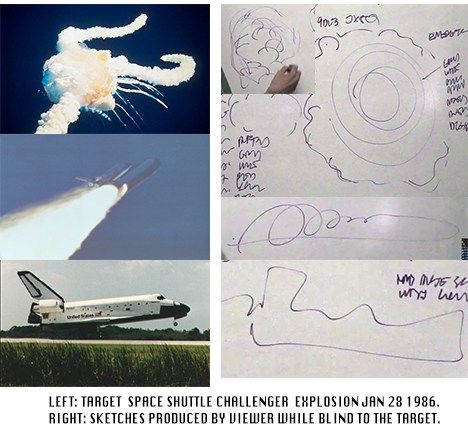
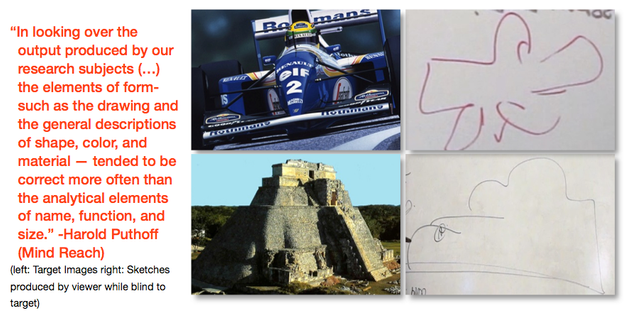
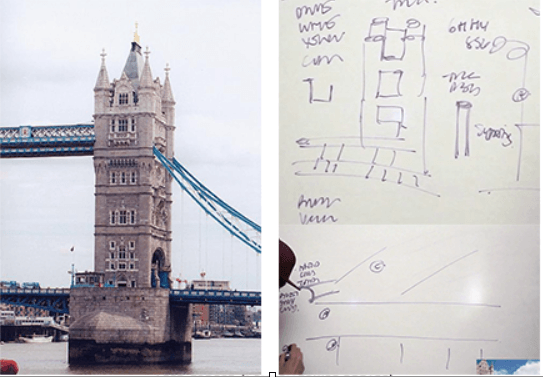
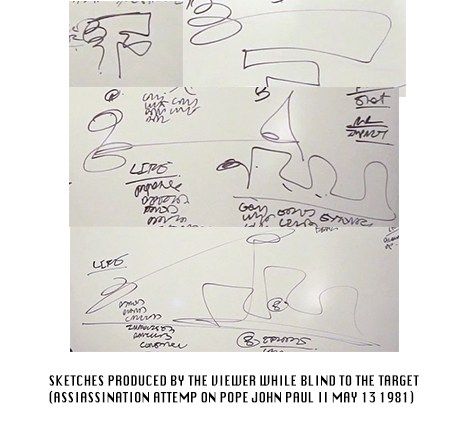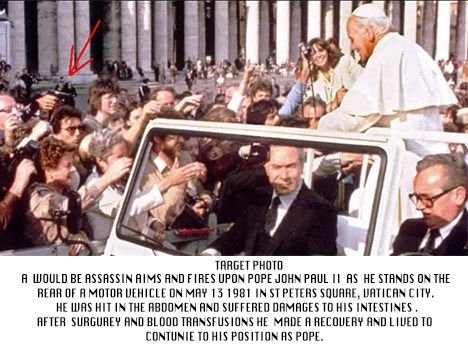
Hi! I am a robot. I just upvoted you! I found similar content that readers might be interested in:
http://thefeedbackloop.info/2015/08/06/neuroscience-rv-sketches/
thanks, thats actually my website ;)
Hello! Welcome to Steemit.
In order to prevent identity theft, identity deception of all types, and content theft we like to encourage users that have an online identity, post for a website or blog, are creators of art and celebrities of all notoriety to verify themselves. Verified users tend to receive a better reception from the community.
Any reasonable verification method is accepted. Examples include:
Thank you!
That is so great. I am very grateful for that! Love it.
thanks for watching , I've followed you as I am a photographer as well, will be posting some photos soon!